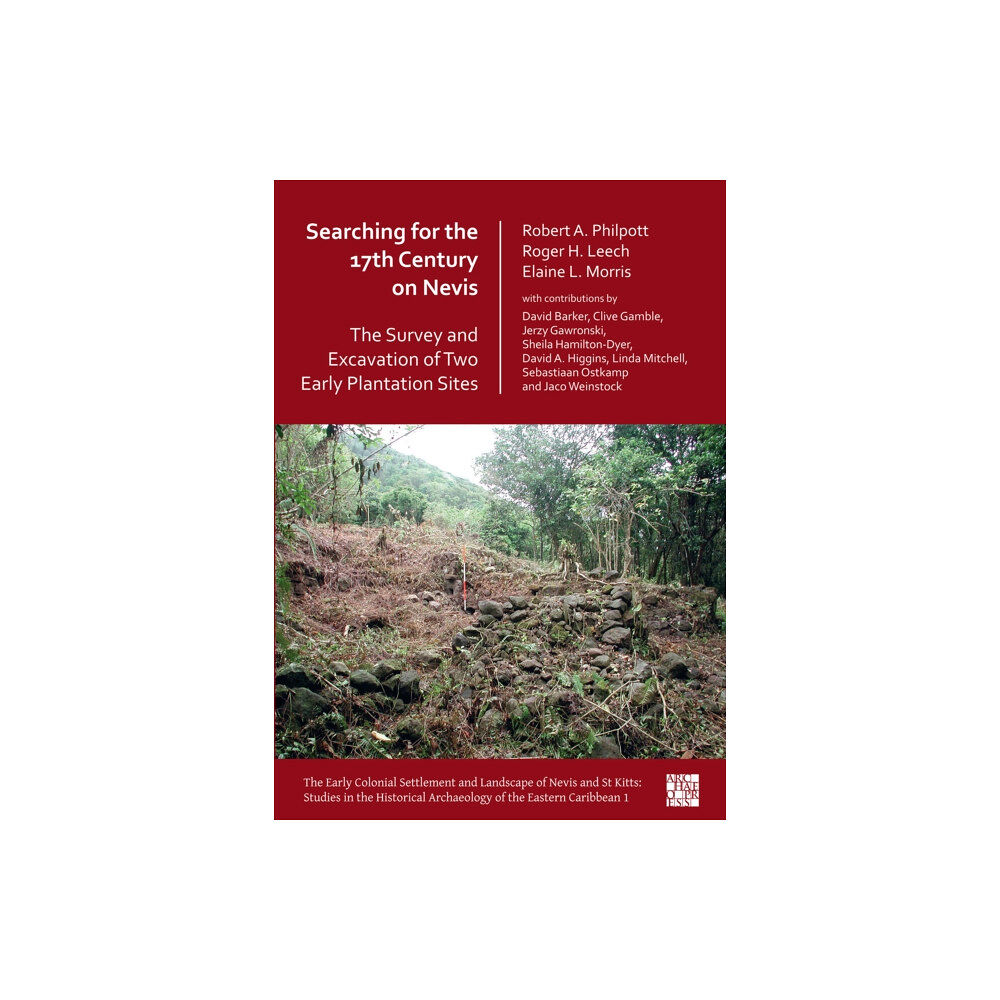- Hem
- Böcker
- Kurslitteratur
- Historia
- Searching for the 17th Century on Nevis: The Survey and Excavation of Two Early Plantation Sites (häftad, eng)

Searching for the 17th Century on Nevis: The Survey and Excavation of Two Early Plantation Sites (häftad, eng)
Searching for the 17th Century on Nevis is the first of a series of monographs dedicated to the archaeological investigation of the l...
719 kr
765 kr
Bara 3 kvar
Skickas inom 2-3 vardagar
- Fri frakt
Fri frakt över 299:-
Snabb leverans
Alltid låga priser
Produktbeskrivning
Searching for the 17th Century on Nevis is the first of a series of monographs dedicated to the archaeological investigation of the landscape, buildings and artefacts of the Eastern Caribbean by the Nevis Heritage Project. This volume presents the results of documentary research and excavation on two sugar plantation sites on the island of Nevis.
Upper Rawlins, located high on Nevis mountain, was occupied in the late 17th and early 18th century and abandoned early. Fenton Hill was occupied from the mid-17th to the mid-19th century and originated with an earthfast timber building, probably a dwelling house, later converted to a kitchen and encapsulated in stone about 1700.
The adjacent main house was probably destroyed in the French raid of 1706 and rebuilt in timber. The final occupation was by Portuguese Madeiran labourers, who were introduced to fill a labour force shortage in the 1840s.
Detailed reports on the finds assemblage include discussions of the handmade, bonfired Afro-Caribbean pottery made by enslaved African women, imported European ceramics and glass, clay tobacco pipes, metalwork and building materialsThe dominance of imported goods from south-western England demonstrates the strong mercantile links between Nevis and Bristol, but local Nevis production of ceramics adds new insights into the estatebased ceramic production on European lines.
Upper Rawlins, located high on Nevis mountain, was occupied in the late 17th and early 18th century and abandoned early. Fenton Hill was occupied from the mid-17th to the mid-19th century and originated with an earthfast timber building, probably a dwelling house, later converted to a kitchen and encapsulated in stone about 1700.
The adjacent main house was probably destroyed in the French raid of 1706 and rebuilt in timber. The final occupation was by Portuguese Madeiran labourers, who were introduced to fill a labour force shortage in the 1840s.
Detailed reports on the finds assemblage include discussions of the handmade, bonfired Afro-Caribbean pottery made by enslaved African women, imported European ceramics and glass, clay tobacco pipes, metalwork and building materialsThe dominance of imported goods from south-western England demonstrates the strong mercantile links between Nevis and Bristol, but local Nevis production of ceramics adds new insights into the estatebased ceramic production on European lines.
| Format | Häftad |
| Omfång | 238 sidor |
| Språk | Engelska |
| Förlag | Archaeopress |
| Utgivningsdatum | 2021-02-11 |
| ISBN | 9781789698862 |
Specifikation
Böcker
- Häftad, 238, Engelska, Archaeopress, 2021-02-11, 9781789698862
Leverans
Vi erbjuder flera smidiga leveransalternativ beroende på ditt postnummer, såsom Budbee Box, Early Bird, Instabox och DB Schenker. Vid köp över 299 kr är leveransen kostnadsfri, annars tillkommer en fraktavgift från 29 kr. Välj det alternativ som passar dig bäst för en bekväm leverans.
Betalning
Du kan betala tryggt och enkelt via Avarda med flera alternativ: Swish för snabb betalning, kortbetalning med VISA eller MasterCard, faktura med 30 dagars betalningstid, eller konto för flexibel delbetalning.
Specifikation
Det finns tyvärr inga specifikationer att visa för denna produkt.
